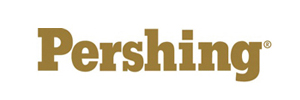Quote of the Week
“You fail all the time, but you aren’t a failure until you start blaming someone else.” Bum Phillips, football coach
Technical Corner
The big news of today is the cratering of oil prices this morning. Oil was down -22% this morning. Even though we all like low gasoline prices, the ramifications of this crash extend well beyond what we pay at the pump. This is a big blow to the many oil producing states such as Texas, North Dakota, Pennsylvania, and Colorado. The oil industry employs millions of people.
Oil prices tumbled as the economic crisis set off by the coronavirus pandemic continues to destroy demand for energy, and concerns have grown that storage tanks in the United States are near capacity and are unable to hold all the unused crude oil.
Oil is already being stockpiled on barges out at sea, and in any nook and cranny that companies can find in their storage facilities. Worries are growing that the deal reached on April 12 between the Organization of the Petroleum Exporting Countries, Russia, and other producers will not be sufficient to prevent the oil markets from being overwhelmed with a record surge of surplus oil.The other potential ramification of the drop in oil prices is that oil producers other than the “majors” need $50 to $60 oil per barrel to be profitable. One would think that all they have to do is just shut down the rigs and wait for prices to recover. However, those oil producers have financed their operations by issuing bonds or borrowing money from banks. If they can’t make the interest payments on the bonds and go into default, it will really affect the junk bond (high yield bond) market. Almost one-third of the junk bond market is in the oil patch. The defaults could cause the junk bond market to lock up because there would be no buyers while everyone owning junk bonds will be trying to sell. We currently have a strong “sell” on high yield bonds.
We are remaining very conservative with our exposure to U.S. Treasuries, mortgage backed bonds, International High-Quality Bonds, managed futures, and Gold.
Even though over the last few weeks we have had a substantial rise in the markets, they are still down over 12% year to date. This is a common occurrence known as a “bear market bounce.” It has happened in the last two recessions of 2000-2002 and 2008-2009. Then the markets crashed to down -50% in 2000-2002 and -57% in 2008-2009 from top to bottom.
This is the start of the corporate earnings season, and it is a lot worse than expected as earnings of the 46 companies that have already reported dropped -32.7%. Those earnings are for the first quarter, which was really pre-shutdown. There is nothing that will hold this market up, except a vaccine for the virus, or a way to mitigate the effects of the illness. Too much damage to the economy has already been done.
Larry’s Thoughts
There have been many discussions regarding ending quarantines and allowing people to return to their jobs. An opinion columnist wrote the following piece for the New York Times.
7 Reasons We Can’t Yet Reopen America
We’re making progress, but not nearly enough.
- Every day for the past two weeks, another 25,000 or so Americans have been diagnosed with the coronavirus. It’s great news that number is no longer growing, but it’s barely started to fall.
- Countries that have succeeded in containing the virus made much more progress in reducing the number of new cases before reopening. “China did not allow Wuhan, Nanjing or other cities to reopen until intensive surveillance found zero new cases for 14 straight days, the virus’s incubation period,” as The Times’s Donald McNeil
- The vast majority of the American population — perhaps about 90 percent — has not yet been exposed to the virus. So there is tremendous potential for outbreaks worse than any we have experienced so far.
- The testing program in the United States remains terribly flawed. About a month ago, the Trump administration promised 27 million tests would be available by the end of March. Late April is now approaching, and yet only about 4 million tests have been conducted. The current pace of testing needs to triple before the country can safely reopen, Harvard researchers estimate.
- We also haven’t fixed our shortages of protective equipment for health care workers. As a recent paper from the conservative-leaning Mercatus Center puts it: “Demand has rapidly outstripped supply as the urgent need for personal protective equipment (PPE) such as surgical masks, respirators, gloves, and gowns, as well as for ventilators, continues to grow apace with the COVID-19 global pandemic.”
- Most places in the United States don’t yet have a plan for aggressive contact tracing — the process of tracking people who may have been exposed to the virus. “Only a few states are recruiting and training the army of public health workers who will be needed to track, trace and isolate anyone exposed to the coronavirus,” Politico’s Joanne Kenen This kind of tracing has been vital to reducing the virus’s spread in South Korea and elsewhere.
- The same goes for quarantining: We don’t yet have anything approaching a full plan. A recent Times Op-Ed, by the public health experts Harvey Fineberg, Jim Yong Kim and Jordan Shlain, explains.
The bottom line: If the country reopened now, we would probably end up in lockdown again soon, while also needlessly increasing the death toll from the virus.
Leonhardt, David. “7 Reasons We Can’t Yet Reopen America” New York Times Opinion Columnist https://www.nytimes.com/2020/04/20/opinion/coronavirus-reopen-economy.html.











